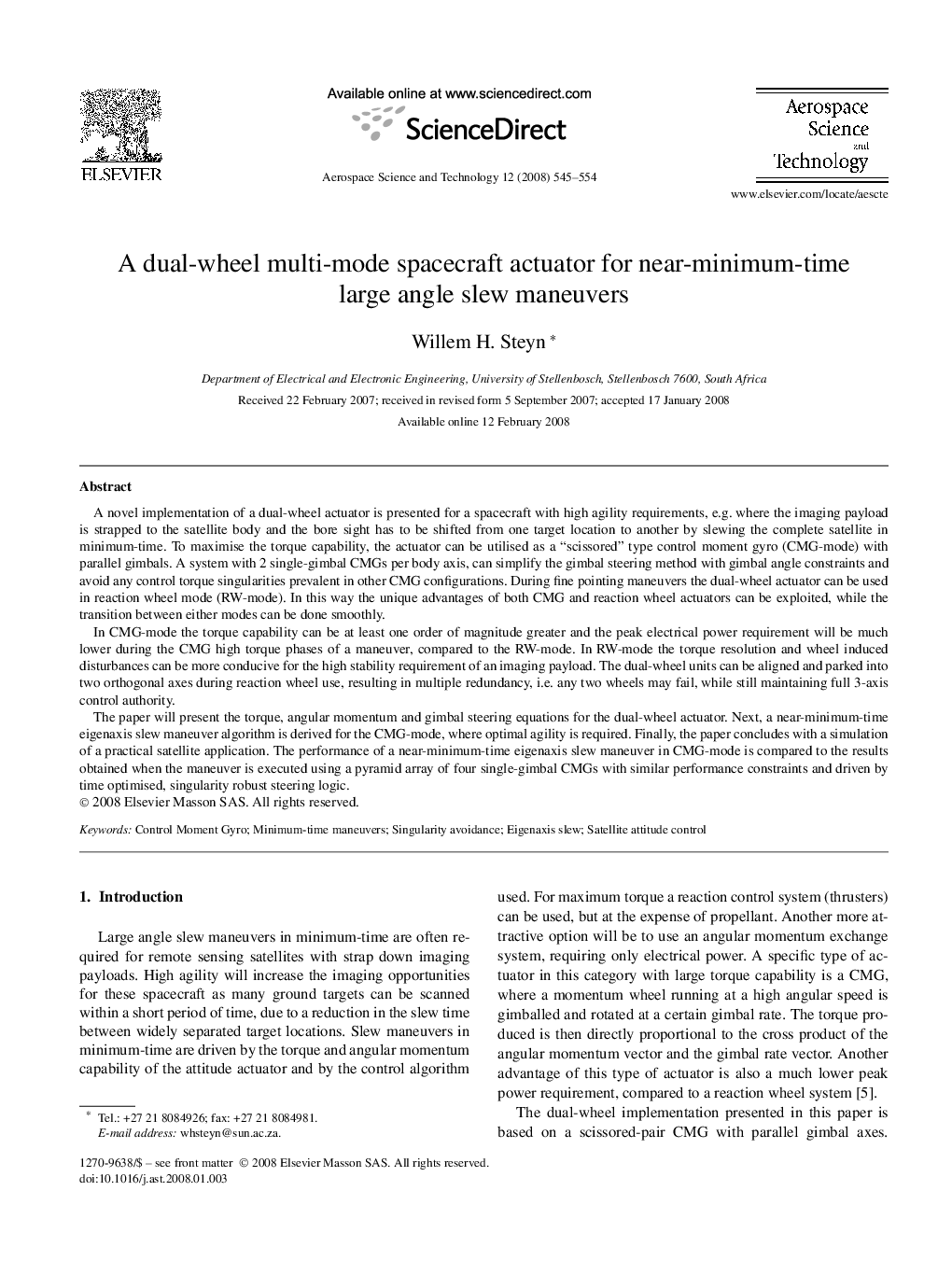| Article ID | Journal | Published Year | Pages | File Type |
|---|---|---|---|---|
| 1718723 | Aerospace Science and Technology | 2008 | 10 Pages |
A novel implementation of a dual-wheel actuator is presented for a spacecraft with high agility requirements, e.g. where the imaging payload is strapped to the satellite body and the bore sight has to be shifted from one target location to another by slewing the complete satellite in minimum-time. To maximise the torque capability, the actuator can be utilised as a “scissored” type control moment gyro (CMG-mode) with parallel gimbals. A system with 2 single-gimbal CMGs per body axis, can simplify the gimbal steering method with gimbal angle constraints and avoid any control torque singularities prevalent in other CMG configurations. During fine pointing maneuvers the dual-wheel actuator can be used in reaction wheel mode (RW-mode). In this way the unique advantages of both CMG and reaction wheel actuators can be exploited, while the transition between either modes can be done smoothly.In CMG-mode the torque capability can be at least one order of magnitude greater and the peak electrical power requirement will be much lower during the CMG high torque phases of a maneuver, compared to the RW-mode. In RW-mode the torque resolution and wheel induced disturbances can be more conducive for the high stability requirement of an imaging payload. The dual-wheel units can be aligned and parked into two orthogonal axes during reaction wheel use, resulting in multiple redundancy, i.e. any two wheels may fail, while still maintaining full 3-axis control authority.The paper will present the torque, angular momentum and gimbal steering equations for the dual-wheel actuator. Next, a near-minimum-time eigenaxis slew maneuver algorithm is derived for the CMG-mode, where optimal agility is required. Finally, the paper concludes with a simulation of a practical satellite application. The performance of a near-minimum-time eigenaxis slew maneuver in CMG-mode is compared to the results obtained when the maneuver is executed using a pyramid array of four single-gimbal CMGs with similar performance constraints and driven by time optimised, singularity robust steering logic.
